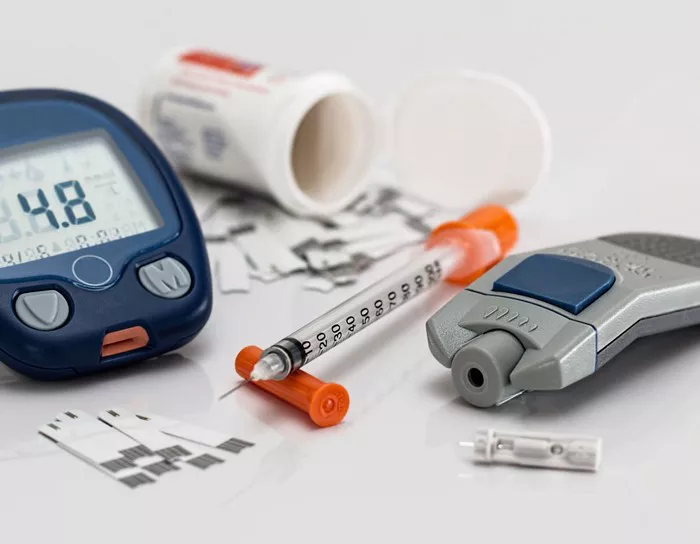Insulin, a vital hormone in the human body, plays a critical role in regulating blood sugar levels. For individuals with diabetes, whose bodies either do not produce enough insulin or cannot effectively use the insulin they produce, managing blood sugar becomes a daily challenge. Among the various types of insulin available, one stands out as the most common and widely prescribed. In this comprehensive guide, we delve into the intricacies of this prevalent form of insulin, exploring its mechanism of action, administration, dosing considerations, and potential side effects.
Introduction to Insulin: The Backbone of Diabetes Management
Insulin, a peptide hormone produced by the pancreas, facilitates the uptake of glucose from the bloodstream into cells, where it is utilized for energy production. Without sufficient insulin or its effective action, glucose accumulates in the bloodstream, leading to hyperglycemia—a hallmark feature of diabetes.
Diabetes, a chronic metabolic disorder, encompasses various subtypes, including type 1 diabetes, type 2 diabetes, gestational diabetes, and others. While the etiology and pathophysiology of each subtype differ, they share the common feature of impaired insulin function, necessitating exogenous insulin administration for management.
The Most Common Type of Insulin: An Overview
Among the plethora of insulin formulations available, one type reigns supreme in terms of prevalence and usage: Human insulin. Human insulin, a synthetic form of the hormone that mirrors its structure and function, holds a prominent position in diabetes management worldwide. This insulin type is derived through recombinant DNA technology, allowing for precise control over its production and formulation.
Mechanism of Action of Human Insulin
Human insulin functions similarly to endogenous insulin, exerting its effects through binding to insulin receptors on target cells. Upon binding, insulin initiates a cascade of intracellular events, ultimately facilitating the translocation of glucose transporter proteins (GLUTs), particularly GLUT-4, to the cell membrane. This process enhances the uptake of glucose into cells, thereby reducing blood sugar levels.
Types of Human Insulin
Human insulin is available in several formulations, classified based on their onset, peak, and duration of action. The main types include:
1. Regular (Short-Acting) Insulin: Also known as neutral insulin, regular insulin typically exhibits an onset of action within 30 minutes, peaks within 2-4 hours, and lasts for approximately 6-8 hours. It is commonly used before meals to control postprandial glucose levels.
2. NPH (Intermediate-Acting) Insulin: Neutral protamine Hagedorn (NPH) insulin is an intermediate-acting insulin with an onset of action around 1-2 hours, peaking at 4-12 hours, and lasting up to 18 hours. It provides basal insulin coverage and is often combined with short-acting insulin for comprehensive glycemic control.
3. Premixed Insulin: Premixed insulin formulations combine short-acting and intermediate-acting insulin in fixed ratios, providing both basal and prandial coverage. These formulations offer convenience and simplicity in dosing, particularly for individuals requiring a combination of insulin types.
Administration and Dosage Considerations
Human insulin is typically administered via subcutaneous injection, utilizing insulin syringes, pens, or pumps. The choice of administration device depends on individual preferences, ease of use, and healthcare provider recommendations. Injection sites commonly include the abdomen, thighs, buttocks, and upper arms, with rotation to prevent lipohypertrophy and injection site reactions.
Dosing of human insulin varies based on various factors, including the patient’s insulin sensitivity, carbohydrate intake, physical activity level, and glycemic targets. Healthcare providers typically prescribe individualized insulin regimens, encompassing basal, prandial, and correction doses to achieve optimal glycemic control while minimizing the risk of hypoglycemia.
Monitoring and Adjusting Insulin Therapy
Regular monitoring of blood glucose levels is essential for assessing the efficacy of insulin therapy and guiding dose adjustments. Self-monitoring of blood glucose (SMBG) enables individuals with diabetes to track their blood sugar levels throughout the day, identifying patterns and making informed decisions regarding insulin dosing and carbohydrate intake.
Additionally, periodic glycated hemoglobin (HbA1c) measurements provide a comprehensive assessment of long-term glycemic control, guiding adjustments to insulin therapy as needed. Healthcare providers may recommend changes to insulin dosing based on SMBG results, HbA1c levels, and individualized glycemic targets.
Potential Side Effects and Complications
While human insulin is generally well-tolerated, it can cause certain side effects and complications, particularly if insulin doses are not appropriately adjusted. Common side effects of insulin therapy include hypoglycemia (low blood sugar), hyperglycemia (high blood sugar), injection site reactions (e.g., redness, swelling, itching), and weight gain.
In addition to acute side effects, long-term insulin therapy may be associated with the development of insulin antibodies, lipodystrophy (localized fat loss or accumulation), and rare allergic reactions. Close monitoring and regular follow-up with healthcare providers are essential for identifying and managing these potential complications.
Conclusion: The Role of Human Insulin in Diabetes Management
In conclusion, human insulin stands as the most common and widely prescribed type of insulin in the management of diabetes. Its ability to mimic endogenous insulin function, coupled with various formulation options and flexible dosing regimens, makes it a cornerstone of diabetes therapy. By understanding the mechanism of action, administration techniques, dosing considerations, and potential side effects of human insulin, healthcare providers and individuals with diabetes can work together to achieve optimal glycemic control and improve overall health outcomes.



























